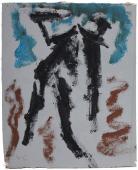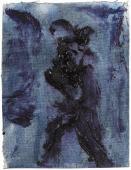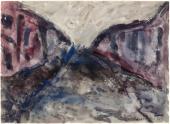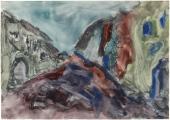(Barcelona, 1951 - Zarautz, 2000)
Luis Claramunt, was born in Barcelona on the 19th of August 1951. His mother was a Piano player and his father a well-recognised interior decorator. In the late 1960s Luis started studying Philosophy and Humanities at the university, but two years later he left his studies to work as a professional painter. Claramunt entered the world of art on his own, as a self-taught artist with no allegiance to any particular school. This shift in profession simultaneously led him to take the decision to move near Plaça Reial and leave his family home, thus starting the process of detaching himself from his wealthy roots.
From then on, he lived a totally bohemian lifestyle which led him to forge and build strong ties with the gypsy families from that era, allowing him to become familiar with the culture and customs of this ethnic group. This context, in which he lived for years, aroused in Claramunt a liking for the “hard side of cities”, as he called it, including cockfights, bullfighting, ports, Chinatowns, after-hours bars and street markets…
All of these marginal, dangerous places in the city fascinated Claramunt. From this period are his urban landscapes with a somewhat dramatic feel and his paintings of deformed and grotesque human figures, which are depicted using a vibrant and dynamic brushwork, dominated by a narrow colour palette of ochre and bluish tones. All in all, a clearly expressionist type of painting that reveals the influences stemming from his admiration of the works of Van Gogh, Picasso, Nonell, Soutine, Munch and Schiele.
He moved to Madrid in the mid-1980s, where he would live permanently after periodically spending long sojourns in different cities like Bilbao, Seville and Marrakesh. He often travelled to the Moroccan city from Seville, and important works emerged from these journeys, which show a finely tuned language in which human figures come to the fore in his canvases.
In the late 1980s his works became more mature, free of expressive elements and evolving to a more synthetic form of painting. Blots gave way to lines, and colour and texture became predominant. In the 1990s he moved permanently to Madrid, where his work became more abstract.
Luis Claramunt died in Zarautz at the age of 49 during the morning of the 18th of December 2000.








